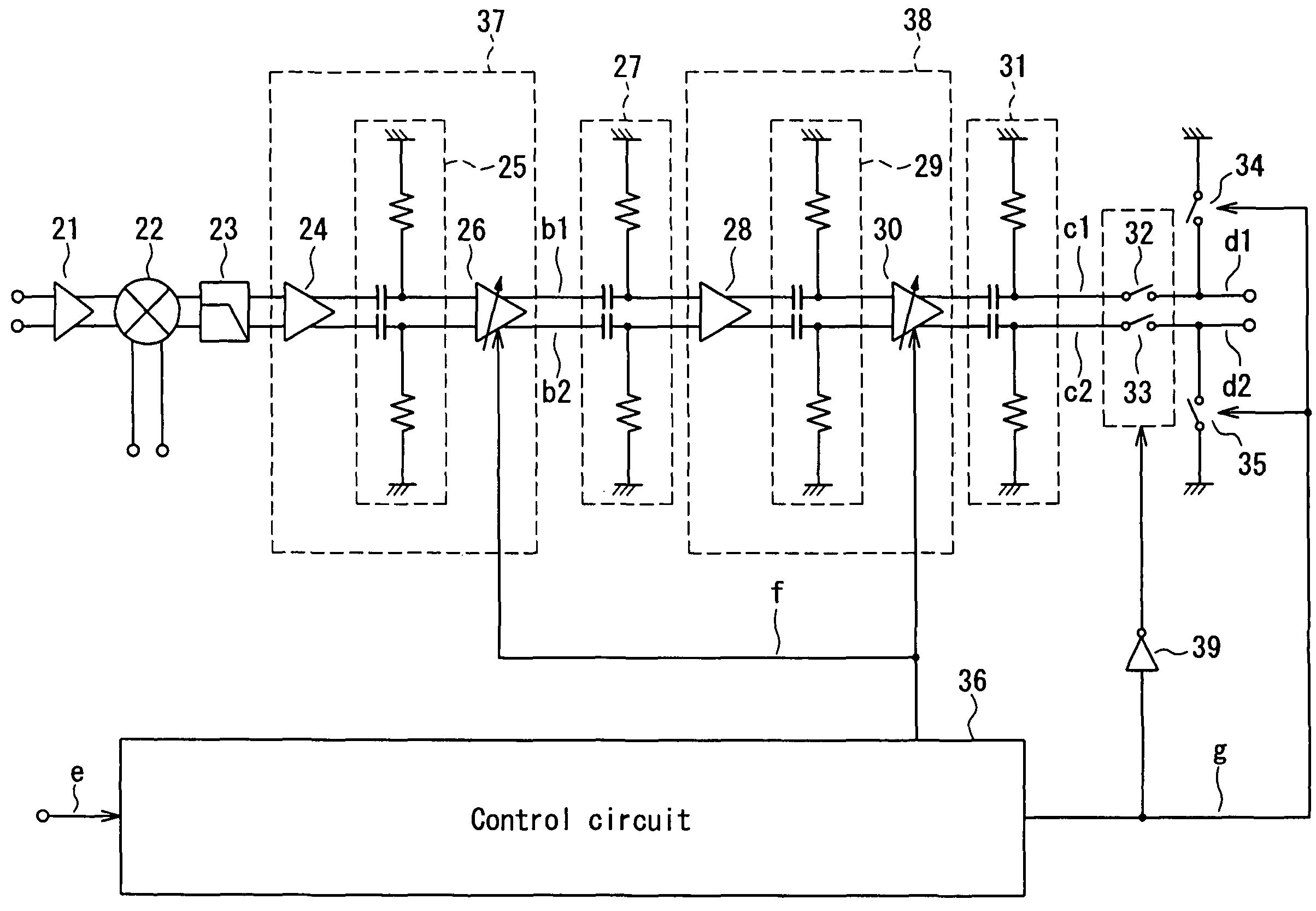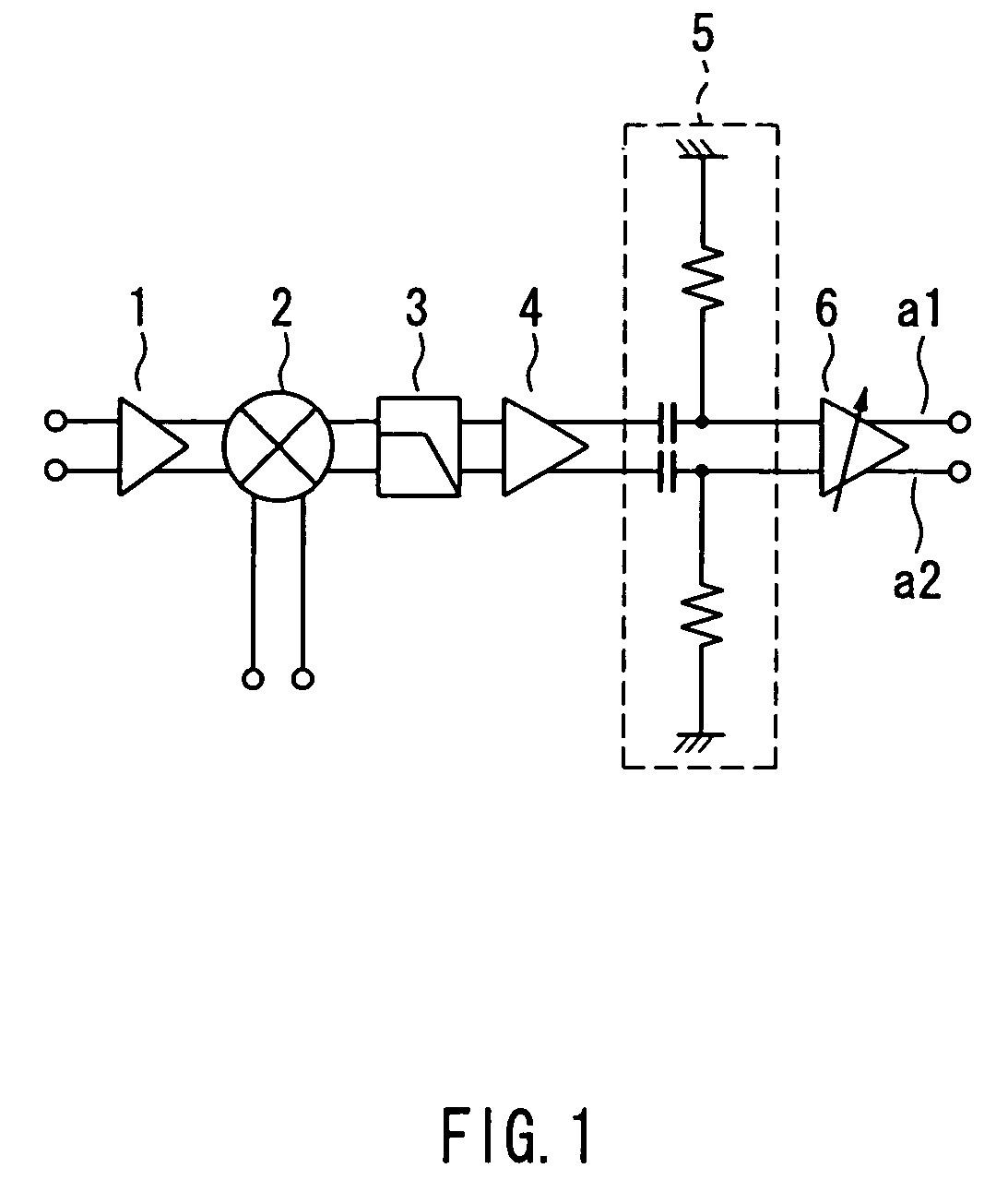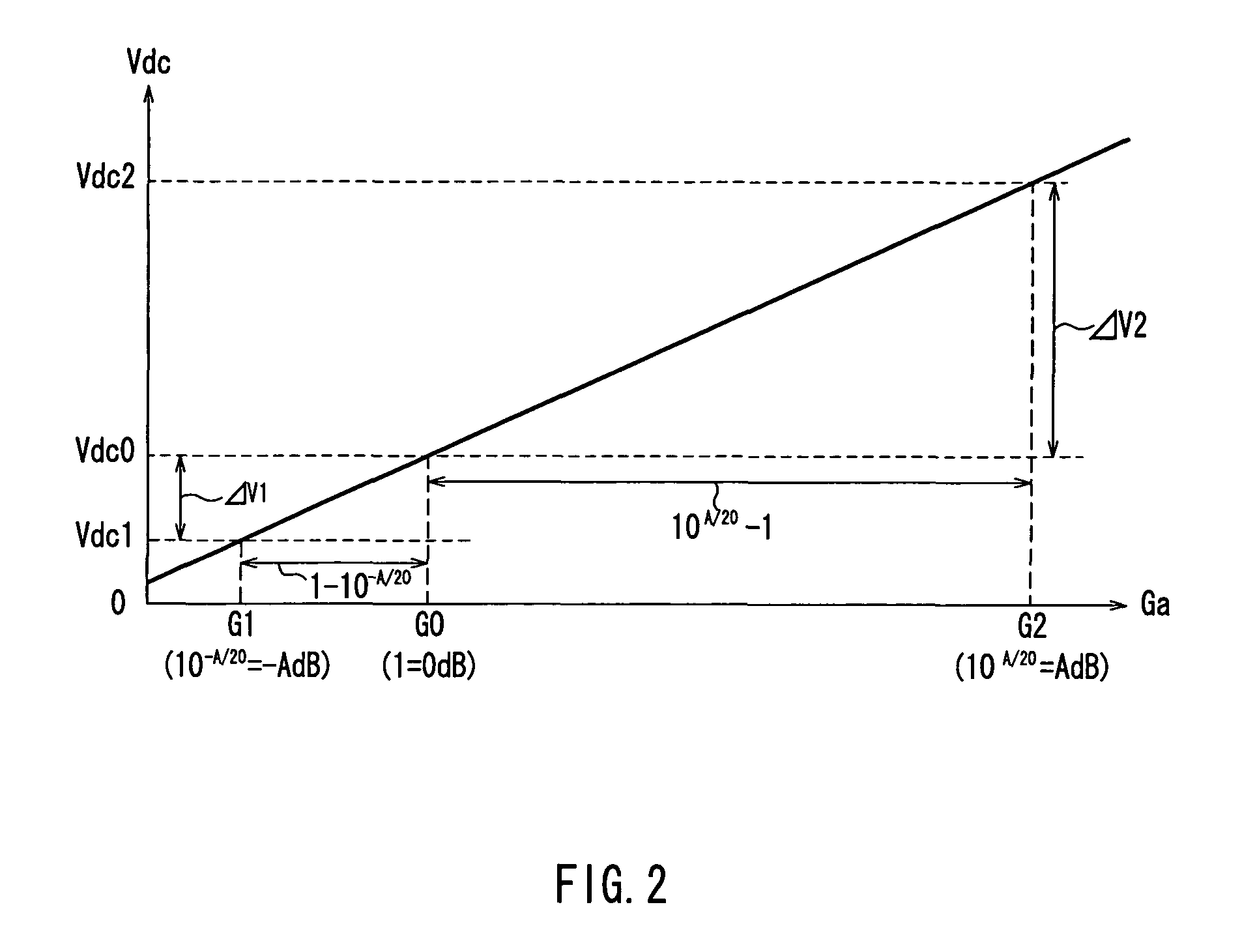Direct conversion receiver circuit
a receiver circuit and receiver circuit technology, applied in the direction of digital transmission, angle demodulation by oscillation conversion, electrical equipment, etc., can solve the problems of large transient response in the output of the baseband circuit for a long time, dc offset voltage, and disadvantages of the direct conversion receiver circuit, so as to avoid degradation of reception quality and suppress the transient response
- Summary
- Abstract
- Description
- Claims
- Application Information
AI Technical Summary
Benefits of technology
Problems solved by technology
Method used
Image
Examples
embodiment 1
[0063]A direct conversion receiver circuit of Embodiment 1 of the present invention will be described by referring to FIGS. 1 to 3 and 22.
[0064]FIG. 1 shows a baseband circuit that constitutes the receiver circuit of this embodiment. The baseband circuit includes a low noise amplifier (referred to as “LNA” in the following) 1, a mixer 2, a low-pass filter 3, a fixed gain amplifier 4, a high-pass filter 5, and a gain control amplifier 6. An output of the fixed gain amplifier 4 is input to the high-pass filter 5, and an output of the high-pass filter 5 is input to the gain control amplifier 6. The gain of the fixed gain amplifier 4 is 0 dB or more. The maximum gain of the gain control amplifier 6 is 0 dB or less.
[0065]The operation of this circuit using the fixed gain amplifier 4 (with a gain of 0 dB or more) and the gain control amplifier 6 (with a maximum gain of 0 dB or less) will be described by comparison with a conventional circuit using a gain control amplifier 214, as shown in...
embodiment 2
[0083]A direct conversion receiver circuit of Embodiment 2 of the present invention will be described by referring to FIGS. 4 and 5.
[0084]FIG. 4 shows a baseband circuit that constitutes the receiver circuit of this embodiment. The baseband circuit includes a LNA 21, a mixer 22, and a low-pass filter 23, which may be the same as those used in the circuit of Embodiment 1 as shown in FIG. 1. After the low-pass filter 23, composite amplifiers 37, 38 including fixed gain amplifiers 24, 28, high-pass filters 25, 29, and gain control amplifiers 26, 30, respectively, are connected in multiple stages. The fixed gain amplifiers 24, 28, the high-pass filters 25, 29, and the gain control amplifiers 26, 30 also may be the same as those used in the circuit of FIG. 1. The gains of the fixed gain amplifiers 24, 28 are 0 dB or more. The maximum gains of the gain control amplifiers 26, 30 are 0 dB or less. Although the circuit of FIG. 4 uses two stages of the composite amplifiers 37, 38, two or more...
embodiment 3
[0102]A direct conversion receiver circuit of Embodiment 3 of the present invention will be described by referring to FIG. 6.
[0103]FIG. 6 shows a baseband circuit that constitutes the receiver circuit of this embodiment. The baseband circuit is formed by removing the fixed gain amplifiers 24, 28 and the high-pass filter 29 from the circuit of Embodiment 2 as shown in FIG. 4. This circuit differs from the circuit of FIG. 4 in that the gains of a plurality of gain control amplifiers 301, 302 are 0 dB or more. In FIG. 6, the elements having the same functions as those in FIG. 4 are denoted by the same reference numerals.
[0104]Like the circuit of Embodiment 2, the control circuit 36 has the following functions. When a gain-change pulse is input, the control circuit 36 opens the first switches 32, 33 and closes the second switches 34, 35, and then switches the gains of the gain control amplifiers 301, 302. After a predetermined time has passed from the switching of the gains, the control...
PUM
 Login to View More
Login to View More Abstract
Description
Claims
Application Information
 Login to View More
Login to View More - R&D
- Intellectual Property
- Life Sciences
- Materials
- Tech Scout
- Unparalleled Data Quality
- Higher Quality Content
- 60% Fewer Hallucinations
Browse by: Latest US Patents, China's latest patents, Technical Efficacy Thesaurus, Application Domain, Technology Topic, Popular Technical Reports.
© 2025 PatSnap. All rights reserved.Legal|Privacy policy|Modern Slavery Act Transparency Statement|Sitemap|About US| Contact US: help@patsnap.com



